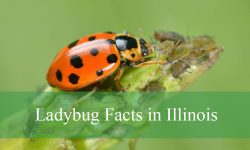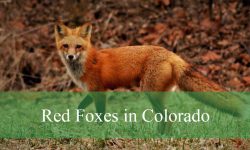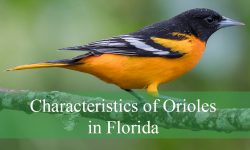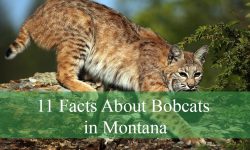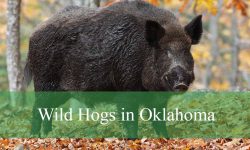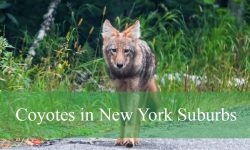Black squirrels are some of the most intriguing wildlife residents in Indiana. They appear suddenly around neighborhood parks, treelined campuses, quiet suburbs, and woodland edges, leaving many people surprised the first time they spot one. Their dark fur and confident movements make them stand out instantly, yet most Hoosiers know surprisingly little about where they come from or why they are so common in certain counties and nearly absent in others.
Indiana has long provided the perfect blend of habitat, food availability, and climate stability for fox squirrels and eastern gray squirrels. Within these populations is the fascinating melanistic variant known as the black squirrel. Though genetically identical to their lighter relatives, their striking appearance and subtle behavioral differences make them subjects of curiosity and local conversation.
This article explores five surprising things about Indiana’s black squirrels. Each section blends scientific understanding with real-world observations to paint a clearer picture of how these animals live, how they adapt, and why Indiana remains one of the best places in the Midwest to see them. Whether you live near Fort Wayne, walk the wooded trails around Lafayette, or spend time on a university campus where these squirrels thrive, you’ll notice details that are easy to miss until you know what to look for.
1. Black squirrels in Indiana are not a separate species
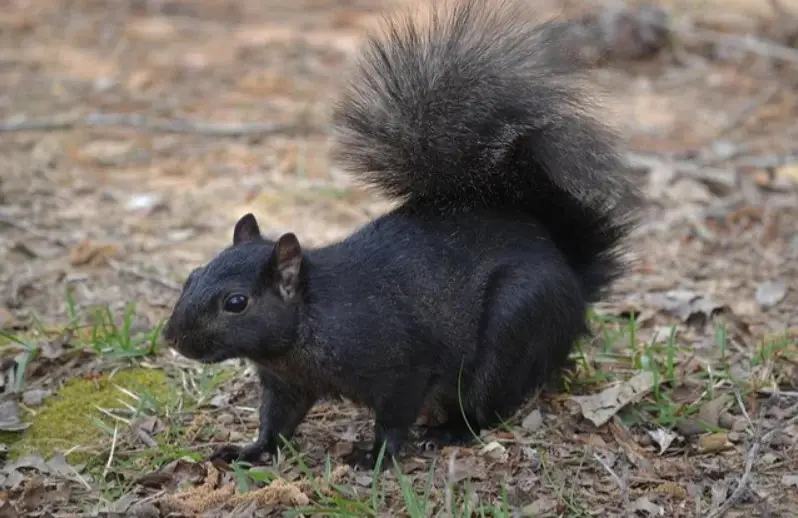
Many people assume the black squirrel is a species of its own, especially because of its dramatically different appearance. In reality, black squirrels in Indiana are simply melanistic variants of the eastern gray squirrel or, in some regions, the fox squirrel.
Melanism occurs when an increased amount of dark pigment (melanin) is expressed in the fur. This genetic quirk does not change the squirrel’s biology, behavior, or basic characteristics. A black squirrel is still capable of interbreeding naturally with gray or brown individuals, and all three color variations may appear together within a single litter.
Indiana’s black squirrels most commonly descend from eastern gray squirrel populations. These squirrels already display a wide range of natural color diversity across their range, and the presence of darker fur variants is part of that spectrum. Areas near large forests or university campuses tend to show higher concentrations because the squirrels experience less predation pressure and longer periods of genetic stability.
Although they look strikingly different, black squirrels do not live separately from their lighter relatives. They share the same food resources, nesting areas, territorial behaviors, and daily patterns. Understanding that they are simply color variations helps explain why their distribution shifts from county to county depending on habitat, genetics, and historical introductions.
2. Indiana has one of the strongest melanistic squirrel populations in the Midwest
While black squirrels are found across many northern states, Indiana stands out for having large, stable, and well-established populations. The phenomenon is particularly prominent in cities like Marion, Fort Wayne, and certain parts of northeastern Indiana, where these squirrels have become an unofficial local mascot.
Several factors contribute to the state’s unusually high concentrations. Indiana’s climate, for example, gives melanistic squirrels certain advantages in colder months. Their darker fur absorbs heat more efficiently than the lighter coats of gray or fox squirrels. As a result, black squirrels may gain a slight survival boost during the frigid winters commonly experienced across northern Indiana.
The second factor is human settlement patterns. Many Indiana towns historically planted large numbers of hardwoods such as oaks, walnuts, and hickories. These trees produce abundant mast crops, which feed larger squirrel populations. When a melanistic gene exists within those populations, stable conditions allow it to persist and spread rather than being diluted.
Finally, anecdotal evidence suggests that early 20th-century introductions played a role. Like several other states, Indiana received imported black squirrel pairs from regions like Ontario and Michigan, where melanistic populations were already strong. These introductions, combined with native variants, helped establish the dense pockets you see today.
If you’ve ever walked across the grounds of Ball State University or visited residential areas in Grant County, you may notice that black squirrels are far more common than lighter ones. This clustering effect reflects both historical introductions and naturally favorable conditions.
3. Their dark fur may offer unexpected survival benefits
At first glance, the black squirrel’s coloration seems like a disadvantage. Dark animals are easier for predators to spot in open areas, especially in snow-covered winter landscapes. While this is true in some habitats, Indiana’s landscape gives black squirrels several survival boosts that people often overlook.
The most well-documented benefit is thermal regulation. The dark coat absorbs more heat from sunlight, providing warmth more quickly on cold mornings. Squirrels that warm themselves faster may have more active hours during short winter days, allowing them to gather food efficiently when competition is high.
Another potential advantage is camouflage in forested areas. Despite being darker than their surroundings, black squirrels visually blend better in deep shade than gray squirrels. Indiana’s mixed deciduous forests create patchy, low-light environments where a dark silhouette disappears more easily between tree trunks or at the base of large oaks and maples. This can help them evade hawks, owls, and ground predators such as foxes.
Some behavioral ecologists also suggest that melanistic squirrels may have a stronger immune response. Though research is ongoing, early studies in the Great Lakes region indicate that the melanistic gene may be linked to enhanced disease resistance in certain squirrel populations. If the relationship is confirmed, it could help explain why Indiana’s black squirrel clusters remain stable even in areas with high competition and variable seasonal stress.
These advantages are subtle, but over decades they can shift the balance in favor of black squirrels in specific local environments. Indiana’s mixture of shadowed woodlots, university greenspaces, and winter chill creates the perfect conditions for the melanistic trait to flourish.
4. Black squirrels in Indiana behave slightly differently than gray or fox squirrels
Color alone does not dictate behavior, but field observers in Indiana have noticed small differences in how black squirrels interact with their environment compared to their lighter relatives. These variations are not universal, yet they appear consistently enough that wildlife biologists consider them noteworthy.
One commonly reported trait is boldness. Indiana’s black squirrels, especially those living near campuses and residential areas, often show more confidence around humans. They may forage closer to sidewalks, approach bird feeders more directly, and show less hesitation when crossing open lawns. This could be a learned behavior rather than a genetic tendency, but it has become part of their reputation among residents.
Another interesting difference is territoriality. In mixed populations where black squirrels are dominant, they sometimes appear more assertive in defending feeding areas or nesting trees. This does not mean they are aggressive, but they may stand their ground longer than gray squirrels before retreating. Some researchers believe that their higher heat absorption may lead to slightly elevated winter activity, which in turn increases their presence in winter forage zones.
Black squirrels in Indiana also seem to adapt quickly to fragmented habitats. Whether navigating the edges of a park, adjusting to backyard feeders, or darting between suburban gardens, they use small patches of cover efficiently. Their willingness to use human-altered spaces may give them an advantage in towns where development reduces forest size but increases ornamental trees and supplemental food sources.
Even though these behavioral nuances are subtle, they add to the charm and allure of black squirrels across Indiana. Their confident manner, adaptability, and visible presence make them memorable wildlife neighbors.
5. Certain Indiana towns value black squirrels as local icons
One of the most surprising aspects of Indiana’s black squirrels is how deeply they are woven into local culture. In several towns, the black squirrel has become more than just a wildlife curiosity. It represents community identity, small-town pride, and even local history.
The best-known example is the city of Marion. The town is so closely associated with black squirrels that it has embraced them as a symbol of community heritage. Marion hosts an annual Black Squirrel Festival in the fall, attracting visitors from across the region. The event includes music, food, historical displays, and activities celebrating the dark-furred squirrels that roam the area’s trees.
Ball State University in Muncie is another hotspot. Students often talk about the black squirrels on campus, and the university bookstore has sold merchandise inspired by them in past years. Sightings are so common that the squirrels have become part of campus culture, appearing in stories, photography projects, and student traditions.
Beyond these examples, smaller Indiana towns and neighborhoods take pride in their black squirrel populations. Residents notice where they appear most often, point them out to visitors, and enjoy occasional online discussions about why some regions have many while others have few. The black squirrel has become a memorable feature of local wildlife, and that sense of recognition is part of what makes Indiana’s population unique.
The connection between people and these animals is an often-overlooked but meaningful part of their story. They offer residents a glimpse into the natural diversity around them and serve as daily reminders of how wildlife and communities coexist.
Frequently Asked Questions
Why are there black squirrels in Indiana?
Black squirrels are melanistic variants of eastern gray or fox squirrels. Indiana’s climate, forest structure, and historical introductions have helped melanistic genes thrive in certain regions.
Are black squirrels rare in Indiana?
In some counties they are common, while in others they are rare or absent. Northeastern Indiana and select college towns often have the highest concentrations.
Do black squirrels behave differently?
They behave similarly to gray and fox squirrels, but observers often report slightly bolder behavior, quicker adaptation to human spaces, and strong territorial confidence.
Are black squirrels more aggressive?
No. They are not more aggressive, though they may appear more assertive when protecting feeding areas or nests.
Can black squirrels mate with gray squirrels?
Yes. Black squirrels are genetically identical to gray squirrels and interbreed naturally. Color variations can appear together within a single litter.
Do black squirrels live longer?
There is no proven difference in lifespan. However, their dark fur may offer some winter survival advantages that could influence overall fitness in certain environments.
Are black squirrels introduced or native?
Both. Some melanistic squirrels are native genetic variants, while others were introduced in the early 20th century from regions with strong black squirrel populations.
Do predators target black squirrels more?
It depends on the habitat. In snowy or open areas, they may be more visible, but in deep shade or forest patches, they blend surprisingly well.
Why are black squirrels common in college towns?
Campuses offer stable tree cover, low predator pressure, and abundant food sources. These conditions allow melanistic traits to persist and spread.
What should I feed black squirrels?
It is best not to feed wild squirrels directly. Allow them to forage naturally for acorns, nuts, seeds, fungi, and seasonal fruits.
Final Thoughts
Black squirrels add color, mystery, and charm to Indiana’s wildlife landscape. Their sleek appearance catches attention, but the story behind them is far richer than their dark fur suggests. From their genetic origins to their behavioral quirks and their unlikely role as local mascots, black squirrels demonstrate the hidden complexity of everyday wildlife.
Indiana’s blend of forests, neighborhoods, campuses, and small-town traditions has shaped these animals into familiar residents that people notice and appreciate. Understanding their biology and history offers a glimpse into how animals adapt to changing landscapes and how communities embrace the wildlife that shares their space.

